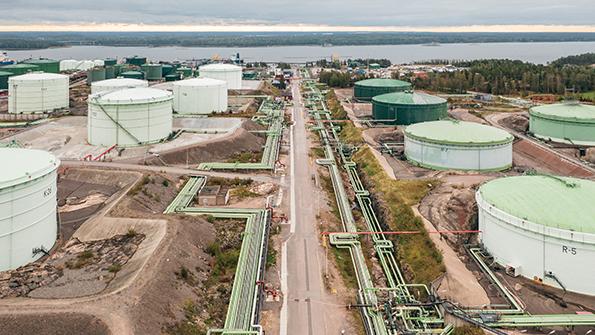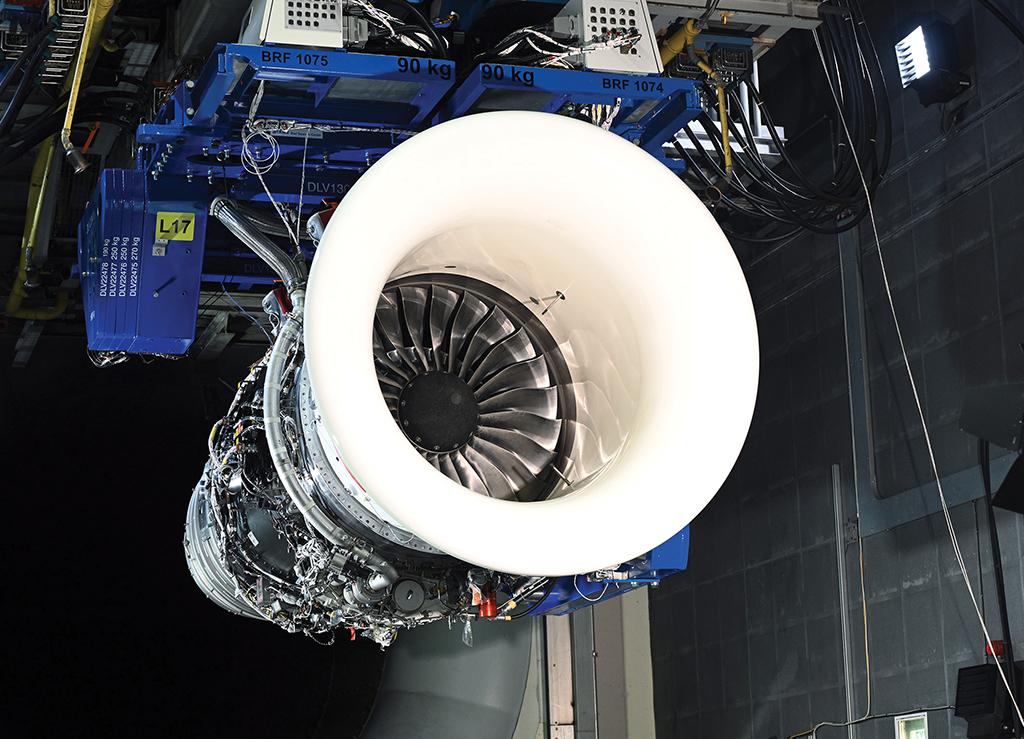
Neste is investing to boost its SAF production capacity.

As European lawmakers debate the final details of the ReFuelEU legislation that will govern the gradual ramp-up in the use of sustainable aviation fuel in the region, the real challenge will be ensuring enough supply.
And to meet supply, the sustainable aviation fuel (SAF) industry needs certainty of demand, says Thorsten Lange, executive vice president of Neste’s Renewable Aviation division. “Industry cannot build refineries on hope,” Lange tells Aviation Week.
- Neste plans to produce 1.5 million metric tons of SAF by the end of 2023
- Industry needs to look beyond current waste sources to future feedstocks
Neste aims to be producing 1.5 million metric tons of SAF by the end of 2023, up from the 100,000 metric tons it currently produces at its refinery in Porvoo, Finland, as major investments boost capacity.
The company is putting money into its refineries in Rotterdam, Netherlands, and Singapore. In Singapore, a €1.5 billion ($1.47 billion) investment nearing completion is slated to increase capacity to 1 million metric tons of SAF per year beginning in the first quarter of 2023.
In Rotterdam, where Neste produces renewable diesel, the company expects to have 500,000 metric tons of SAF capacity available starting in October 2023.
Beyond that, Neste is making a further €1.9 billion investment in expanding its site in Rotterdam, with production capacity of an extra 700,000 metric tons of SAF set to be in place by 2026.
Meanwhile, talks at the European legislative level in Brussels are nearing conclusion on the Fit for 55 legal framework targeted at ensuring the EU meets its long-term net-zero emissions goals.
For aviation, one of the key points still under discussion is the Re-Fuel-EU legislation, including SAF definitions, blending mandates, definitions of sustainable biofuels, the scope of ambitions for synthetic e-fuels and whether airports should be required to provide infrastructure for future hydrogen projects.
The lawmakers are expected to introduce a 2% SAF blending mandate for 2025, rising to 5% in 2030, 32% by 2040 and 63% by 2050, the year by which both the EU and the global aviation industry have pledged to achieve net-zero emissions.
Lange says the legislation is a starting point that will help to build the demand certainty SAF producers need, but he also points to a shift in attitudes among consumers toward an increasing willingness to pay for more sustainable journeys. That could help and should be encouraged, he adds.
“We not only have regulations coming into place, but also we definitely see the mental shift not only from corporates but also from passengers,” Lange says. “If we help them to understand how they can make flying more sustainable, I’m sure even voluntary demand will be picking up very soon. The additional amount passengers would need to pay for SAF flights is peanuts compared to the money they would spend for food at the airport.”

SAF is attracting increasing interest from the industry. In early October, Air France KLM Martinair Cargo introduced goSAF, which enables customers to set their level of SAF contribution for each cargo shipment. In a separate move, Rolls-Royce has signed a memorandum of understanding with clean-tech developer Alder Fuels for SAF tests, including flight tests on a Rolls-Royce Pearl engine.
To ensure ever greater SAF volumes in years to come, the industry also needs to look to the future—beyond the current waste feedstocks, an area which raises many questions—about the practicality, ethics and environmental impact of using crops grown specifically to be used as fuels during a time of increasing threats to food security for the world’s population.
Neste’s SAF is currently made from 100% waste and residues, such as fats and used cooking oil, and that will remain the case for some years, Lange says. “But it’s certainly also about the future,” he notes. “Can we make sure that we are futureproof, that we will not be running into trouble in the coming years, especially toward the end of the decade?”
Plenty of opportunities exist for the industry to expand the pool of available feedstocks—provided producers have the certainty they need to invest in the necessary technology.
“If we are not making the right decisions, we may run into trouble,” Lange says.
He notes that there is big potential for SAF to be produced from crops grown on degraded land, a move that could help decarbonize aviation, support the agricultural sector and aid in the fight against climate change. “A lot of these areas are pretty much deserted, so if you covered them actively with green material, that would help,” Lange points out.
Another potential SAF feedstock is municipal solid waste, he says. “This is promising—capex-heavy, certainly—but it would also help [provide] more feedstocks and [address] our waste challenge,” he says. “Using our waste is obviously not a bad thing.”
Neste has around 1,000 people from its 5,000-strong workforce focusing on research and development and exploring possibilities, but the industry needs more certainty to keep investing. “On the advocacy side, there are more efforts needed,” Lange says. “We as an industry are in talks . . . with the policymakers to make the right decisions. That also entails open and honest discussions with [non-governmental organizations]. They are also on a mission—they want to find the balance between reality and what would be ideal.”





